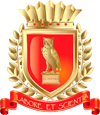Concept in cognitive linguistics
Полная версия работы доступна во вкладке "Файлы работы" в формате PDF
The most important object of cognitive science is language. Without reference to language, it is impossible to understand the essence of such cognitive abilities of a person as perception, assimilation and processing of sound information, planning, problem solving, acquisition, presentation and use of knowledge. According to E. S. Kubryakova, cognitive linguistics studies not only language, but also cognition (awareness, thinking, knowledge).
Cognition is a cognitive process or a set of mental processes. Cognition is closely related to language, because it is in language that we transfer our accumulated experience and knowledge, reason, and exchange information. All human cognitive activity can be considered as developing the ability to navigate in the world, and this activity is associated with the need to identify and distinguish objects: concepts arise to provide operations of this kind.
By the end of the 20th century, linguists realized that a native speaker is a person with certain conceptual systems. Concepts are mental entities. Each concept brings together fundamentally important knowledge about the world for a person. The system of concepts forms a picture of the world, which reflects a person's understanding of reality, its special conceptual "drawing", on the basis of which a person thinks the world. According to M. Schwartz, the concept is an operational content unit of memory of the mental lexicon, the conceptual system and language of the brain, the whole picture of the world reflected in the human psyche.
Nowadays, in linguistic science scientists distinguish three main approaches to understanding the concept.
The first approach, which is represented by Stepanov Y. S., considering the concept, he pays great attention to the cultural aspect, where the whole culture is understood as a set of concepts and relations between them. They occupy a nuclear position in the collective language consciousness. With this understanding of the term "concept", the role of language is secondary, it is only an auxiliary tool.
The second approach: (representatives of N. D. Arutyunova, A. D. Shmelev) the involvement of the semantics of the language sign in cognitive linguistics is the only means of forming the content of the concept. N. F. Alefirenko holds a similar point of view, offering a semantic approach to the concept, he understands it "as a unit of cognitive semantics".
Proponents of the third approach are D. S. Likhachev, E. S. Kubryakova, who believe that the concept does not directly arise from the meaning of the word, but it is the result of the collision of the meaning of the word with the personal and popular experience of a person, the concept is an intermediary between words and reality.
An interesting theory of the concept was proposed by Y. D. Apresyan. It is based on the following provisions:
1) each natural language reflects a certain way of perceiving and organizing the world; the meanings expressed in it form a single system of views, a kind of collective philosophy that is imposed by language on all speakers;
2) the way of conceptualizing the world peculiar to language is partly universal, partly national-specific;
3) the view of the world is naive in the sense that it differs from the scientific picture of the world, but it's not primitive representations.
The concept consists of separate features of the objective or subjective world, differentially reflected in the consciousness of a person and differing in the degree of abstraction. Concepts can be personal, age-specific, and nationwide. The concept is built from different layers and these layers are the result of the cultural life of different eras. The concept consists of historically different layers, different in time of formation, origin, and semantics, and has a special structure that includes:
1) the main (actual) feature;
2) additional (passive, historical) feature;
3) internal form.
References:
1. Апресян Ю. Д. Избранные труды, том I. Лексическая семантика: 2-е изд., испр. и доп. – М.: Школа «Языки русской культуры», Издательская фирма «Восточная литература» РАН, 1995. – VIII с., 472 с.
2. Жеребило Т. В. Словарь лингвистических терминов. Изд. 5-е, испр. и доп. – Назрань: ООО «Пилигрим», 2010. – 486 с.
3. Кубрякова Е. С., Демьянков В. З., Панкрац Ю. Г, Лузина Л. Г. Краткий словарь когнитивных терминов / Под общ. ред. Е. С. Кубряковой. – М. : Филол. фак. МГУ, 1996. – 245 с.
4. Маслова В. А. Введение в когнитивную лингвистику: учеб. Пособие / В. А. Маслова. – 3-е изд., испр. – М. : Флинта : Наука, 2007. – 296 с.
